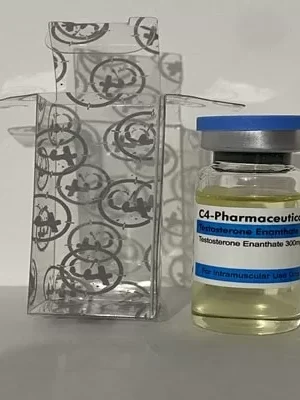Semaglutide 5mg
$249.00
Semaglutide 5mg is the active ingredient in Wegovy, Ozempic, and Rybelsus. it’s a medication that belongs to the class of glucagon-like peptide-1 (GLP-1) receptor agonists.
Description
Semaglutide Drug Classification
Active substance: semaglutide 5mg
Brand names: ozempic, rybelsus, wegovy
Dosage form: subcutaneous injection, tablet
Active half-life: approximately 1 week
Hypoglycemia risk: low
What is semaglutide?
Semaglutide 5mg is the active ingredient in Wegovy, Ozempic, and Rybelsus. it’s a medication that belongs to the class of glucagon-like peptide-1 (GLP-1) receptor agonists. It is primarily used for the treatment of major cardiovascular events such as heart attack or stroke in type two diabetes patients, helping to improve blood sugar control and weight loss in specific patients.
Form:
Semaglutide is a freeze-dried white powder that comes in a 5mg vial. This advantage of semaglutide allows you to set any dose you want. The 5mg vial is usually used for smaller dosages of semaglutide.
What is the difference between Wegovy, Ozempic and Rybelus?
Wegovy, Ozempic, and Rybelsus are all medications that contain the active ingredient semaglutide, which is a glucagon-like peptide-1 (GLP-1) receptor agonist. However, they are used for different purposes and come in different formulations. Here are the key differences between Wegovy, Ozempic, and Rybelsus:
- Wegovy:
- Purpose: Wegovy is primarily used for weight management in adults with obesity or overweight who have at least one weight-related condition.
- Dosage Form: It is administered as a subcutaneous injection once weekly.
- Dosage Strength: The recommended dosage is 2.4 mg once weekly.
- Ozempic:
- Purpose: Ozempic is indicated for the treatment of type 2 diabetes in adults. It helps improve blood sugar control.
- Dosage Form: It is administered as a subcutaneous injection once weekly.
- Dosage Strength: The initial recommended dosage is 0.25 mg once weekly for the first four weeks, followed by an increase to 0.5 mg once weekly. Some individuals may benefit from a further increase to 1 mg once weekly based on their response and tolerability.
- Rybelsus:
- Purpose: Rybelsus is also used for the treatment of type 2 diabetes in adults.
- Dosage Form: It is unique among GLP-1 receptor agonists as it is available in oral tablet form.
- Dosage Strength: The recommended starting dosage is usually 7 mg once daily for the first 30 days. After the initial period, the dose may be increased to 14 mg once daily based on the individual’s response.
While all three medications share the common active ingredient, their specific formulations, recommended uses, and dosing regimens are tailored to their intended purposes—weight management for Wegovy and blood sugar control in type 2 diabetes for Ozempic and Rybelsus. It’s essential to use these medications under the guidance of a healthcare professional who can determine the most suitable treatment based on individual health conditions and needs.
Recommended Dosage for Semaglutide 5mg:
The recommended dosage for semaglutide can vary depending on the specific formulation and brand name. Here are the recommended dosages for three common semaglutide products:
- Wegovy (Semaglutide 2.4 mg for weight management):
- The recommended dosage for Wegovy is 2.4 mg once weekly.
- It is administered as a subcutaneous injection.
- Ozempic (Semaglutide for type 2 diabetes):
- The recommended starting dosage for Ozempic is 0.25 mg once weekly for the first four weeks.
- After the initial four weeks, the dosage is increased to 0.5 mg once weekly.
- Some individuals may benefit from a further increase to 1 mg once weekly based on their response and tolerability.
- Ozempic is administered as a subcutaneous injection.
- Rybelsus (Oral semaglutide for type 2 diabetes):
- The recommended dosage for Rybelsus is usually 7 mg or 14 mg once daily.
- The 7 mg dose is typically used for the first 30 days of treatment, and then the dose may be increased to 14 mg once daily based on the individual’s response.
- Rybelsus is unique among GLP-1 receptor agonists as it is available in oral tablet form.
How Does Semaglutide Work?
Semaglutide 5mg is a weight-loss medicine that works by mimicking a body hormone called glucagon-like peptide-1 (GLP-1), which targets areas of the brain that regulate appetite. Semaglutide helps balance out hormones like insulin, significantly reduces blood sugar, and therefore suppresses your appetite and reduces food cravings.
Here’s how semaglutide works:
- Insulin Stimulation: Semaglutide activates GLP-1 receptors on pancreatic beta cells, leading to an increase in insulin secretion. Insulin is a hormone that helps cells take up glucose from the bloodstream, thereby lowering blood sugar levels.
- Glucagon Inhibition: Semaglutide inhibits the production of glucagon, a hormone that raises blood sugar levels by promoting the release of glucose from the liver. By reducing glucagon levels, semaglutide helps to lower blood sugar levels.
- Slowing Gastric Emptying: Semaglutide slows down the emptying of the stomach, which helps to control the rate at which glucose is released into the bloodstream after meals. This can contribute to more stable post-meal blood sugar levels.
- Appetite Regulation: GLP-1 receptor activation by semaglutide in the brain can lead to a feeling of fullness or satiety. This effect can help with weight management, making semaglutide a useful option for individuals with obesity or overweight.
Overall, the actions of semaglutide are designed to improve glycemic control in individuals with type 2 diabetes and to assist with weight management in certain populations. The medication is typically administered as a subcutaneous injection, either weekly (as in the case of Wegovy and Ozempic) or daily (as in the case of Rybelsus). It is important to note that semaglutide is usually used in conjunction with lifestyle modifications, including diet and exercise, for optimal management of diabetes and related conditions.
Benefits of taking Semaglutide 5mg:
Semaglutide offers several benefits for individuals with type 2 diabetes and, in the case of Wegovy, for those seeking weight management. Here are some of the key benefits associated with taking semaglutide:
- Improved Blood Sugar Control: Semaglutide, as a glucagon-like peptide-1 (GLP-1) receptor agonist, stimulates insulin secretion and inhibits glucagon production. This helps regulate blood sugar levels, leading to improved glycemic control in individuals with type 2 diabetes.
- Weight Management (Wegovy): Wegovy, a specific formulation of semaglutide, is indicated for weight management in adults with obesity or overweight who have at least one weight-related condition. Semaglutide can help individuals achieve and maintain weight loss by promoting a feeling of fullness, slowing gastric emptying, and affecting the central regulation of appetite.
- Cardiovascular Benefits: Some GLP-1 receptor agonists, including semaglutide, have demonstrated cardiovascular benefits. Studies have shown a reduction in major cardiovascular events in individuals with type 2 diabetes who are treated with GLP-1 receptor agonists.
- Potential Renal Benefits: There is ongoing research to explore the potential renal (kidney) benefits of GLP-1 receptor agonists, including semaglutide. Some studies suggest a possible reduction in the progression of diabetic kidney disease.
- Convenient Administration: Semaglutide is available in different formulations, including subcutaneous injections (Wegovy and Ozempic) and an oral tablet (Rybelsus). The convenience of administration can contribute to improved medication adherence.
- Lower Risk of Hypoglycemia: Unlike some other diabetes medications, semaglutide has a lower risk of causing hypoglycemia (dangerously low blood sugar levels) when used alone. This is because its actions are glucose-dependent, meaning it stimulates insulin secretion only when blood sugar levels are elevated.
When Should You Take Semaglutide?
Semaglutide is typically administered once a week, on the same day each week. The injection is given subcutaneously, and it can be taken with or without food. It is crucial to follow the prescribed schedule and instructions provided by a healthcare professional.
When Should You Not Take Semaglutide?
Semaglutide may not be suitable for individuals with a history of hypersensitivity to the drug or its components. Additionally, caution is advised in certain medical conditions, such as a history of pancreatitis or severe gastrointestinal disease. Pregnant or breastfeeding individuals should consult their healthcare provider before using Semaglutide.
What is the Mechanism of Action of Semaglutide
The mechanism of action of semaglutide involves its activity as a glucagon-like peptide-1 (GLP-1) receptor agonist. GLP-1 is a hormone produced in the intestines in response to food intake, and it plays a crucial role in the regulation of blood sugar levels. Semaglutide, being a synthetic analog of GLP-1, mimics the effects of the natural hormone. Here is a detailed breakdown of the mechanism of action:
- GLP-1 Receptor Activation: Semaglutide binds to and activates the GLP-1 receptors on various cells, including pancreatic beta cells, alpha cells, and others.
- Pancreatic Beta Cells (Insulin Stimulation): Activation of GLP-1 receptors on pancreatic beta cells leads to an increase in insulin secretion. Insulin is a hormone that helps cells take up glucose from the bloodstream, promoting the storage of glucose in cells and lowering blood sugar levels.
- Pancreatic Alpha Cells (Glucagon Inhibition): Semaglutide inhibits the production of glucagon, a hormone released by pancreatic alpha cells. Glucagon raises blood sugar levels by promoting the release of glucose from the liver. By inhibiting glucagon, semaglutide helps reduce excessive glucose production, contributing to improved blood sugar control.
- Gastric Emptying Regulation: Semaglutide slows down the emptying of the stomach. This effect helps control the rate at which glucose is released into the bloodstream after meals, contributing to more stable post-meal blood sugar levels.
- Appetite Regulation: GLP-1 receptors are also present in the brain, particularly in areas that regulate appetite. Semaglutide’s activation of these receptors can lead to a feeling of fullness or satiety, which may contribute to weight management.
- Renal Effects: Some GLP-1 receptor agonists, including semaglutide, have shown potential benefits for the kidneys. Studies are ongoing to explore the renal effects, and it is suggested that GLP-1 receptor agonists may have a protective impact on the kidneys.
Uses of Semaglutide 5mg
- Type 2 Diabetes (Ozempic): Semaglutide, under the brand name Ozempic, is indicated for the treatment of type 2 diabetes in adults. It is used to improve glycemic control by stimulating insulin secretion and inhibiting glucagon production, among other effects.
- Weight Management (Wegovy): Semaglutide, under the brand name Wegovy, is specifically approved for weight management in adults with obesity or overweight who have at least one weight-related condition. It is used as an adjunct to diet and exercise.
- Oral Treatment for Type 2 Diabetes (Rybelsus): Semaglutide, in the form of an oral tablet under the brand name Rybelsus, is approved for the treatment of type 2 diabetes in adults. It is taken orally and can help improve blood sugar control.
Warnings and Precautions for Semaglutide 5mg
Here are some general warnings and precautions associated with semaglutide:
- Pancreatitis: GLP-1 receptor agonists, including semaglutide, have been associated with an increased risk of pancreatitis. Patients should be informed of the signs and symptoms of pancreatitis (persistent severe abdominal pain) and advised to discontinue semaglutide if pancreatitis is suspected.
- Medullary Thyroid Carcinoma (MTC): Cases of MTC, a rare thyroid cancer, have been reported in patients taking GLP-1 receptor agonists. Semaglutide should not be used in patients with a history of MTC or in those with multiple endocrine neoplasia syndrome type 2 (MEN 2). Routine monitoring of serum calcitonin or thyroid ultrasound is not recommended in individuals taking semaglutide.
- Hypoglycemia: The risk of hypoglycemia (low blood sugar) is increased when semaglutide is used in combination with insulin or insulin secretagogues. Adjustments in the dosage of these medications may be needed to reduce the risk of hypoglycemia.
- Renal Impairment: Use caution in patients with renal impairment, and consider a lower starting dose in those with severe renal impairment. Monitor renal function regularly.
- Gastrointestinal Adverse Reactions: Semaglutide may cause gastrointestinal adverse reactions, including nausea, vomiting, diarrhea, and constipation. These symptoms may decrease over time. Patients should be informed about these potential side effects.
- Thyroid C-Cell Tumors: GLP-1 receptor agonists, including semaglutide, have been associated with an increased risk of thyroid C-cell tumors in preclinical studies with rodents. The relevance of this finding to humans is unknown.
- Heart Rate Increase: Semaglutide can cause an increase in heart rate. Use with caution in patients with a history of cardiovascular disease.
- Injection Site Reactions: Subcutaneous injection site reactions, including nodules, erythema, and pruritus, may occur. Rotate injection sites to minimize the risk.
Side Effects of Semaglutide
Semaglutide, like any medication, may have both short-term and long-term side effects. It’s important to note that individual responses to medications can vary, and not everyone will experience the same side effects. Here are some potential short-term and long-term side effects of semaglutide 5mg, presented in point form:
Short-Term Side Effects of Semaglutide 5mg:
- Gastrointestinal Distress:
- Nausea
- Vomiting
- Diarrhea
- Abdominal pain
- Injection Site Reactions:
- Redness
- Swelling
- Itching
- Nodules at the injection site (common with subcutaneous injections)
- Hypoglycemia:
- Low blood sugar levels, especially when used in combination with other diabetes medications
- Appetite Changes:
- Changes in appetite or food intake
Long-Term Side Effects of Semaglutide 5mg:
- Pancreatitis:
- Semaglutide has been associated with an increased risk of pancreatitis.
- Medullary Thyroid Carcinoma (MTC):
- Cases of MTC, a rare thyroid cancer, have been reported in patients taking GLP-1 receptor agonists.
- Cardiovascular Effects:
- The long-term cardiovascular safety of semaglutide is generally positive, but individual responses may vary. Regular monitoring for cardiovascular risk factors may be necessary.
- Renal Effects:
- Some GLP-1 receptor agonists, including semaglutide, have shown potential renal benefits, but long-term data are still being studied.
- Thyroid C-Cell Tumors:
- Long-term concerns related to the potential risk of thyroid C-cell tumors observed in preclinical studies with rodents.
- Heart Rate Increase:
- Long-term use may be associated with an increase in heart rate.
- Bone Health:
- There is ongoing research to understand the potential effects on bone health with long-term use.
Drug Interactions of Semaglutide
Semaglutide may interact with certain medications, including insulin and other antidiabetic agents. Close monitoring and dosage adjustments may be necessary when using these medications concomitantly. It is essential to inform healthcare providers about all medications being taken to prevent potential interactions.
- Insulin and Insulin Secretagogues:
- Concurrent use with insulin or insulin secretagogues (e.g., sulfonylureas) may increase the risk of hypoglycemia (low blood sugar). Dosage adjustments may be necessary.
- Oral Medications:
- Semaglutide may affect the absorption of orally administered medications. Administer oral medications at least 1 hour before taking semaglutide.
- Warfarin:
- Semaglutide may increase the international normalized ratio (INR) in patients taking warfarin, potentially leading to an increased risk of bleeding. Close monitoring of INR is recommended.
- Digoxin:
- The absorption of digoxin may be delayed when taken concomitantly with semaglutide. Monitoring of digoxin levels is advised.
- Immunosuppressants:
- Use caution when combining semaglutide with immunosuppressive agents, as GLP-1 receptor agonists have been associated with an increased risk of immunogenicity. Close monitoring may be necessary.
- Thyroid Hormones:
- Medications affecting thyroid function may interact with semaglutide. Monitoring of thyroid function may be needed, especially in patients with a history of thyroid disorders.
- Gastrointestinal Medications:
- Some medications used for gastrointestinal disorders, such as antacids or medications that affect gastric acidity, may interact with semaglutide. Administering semaglutide at least 1 hour before taking these medications is recommended.
- Oral Contraceptives:
- Semaglutide may affect the absorption of oral contraceptives. Women using oral contraceptives should be advised to take them at least 1 hour before semaglutide.
Storage for Semaglutide 5mg
Semaglutide should be stored according to the manufacturer’s guidelines. Typically, it is stored in the refrigerator, and precautions should be taken to protect it from light. It is essential to check the product’s labeling for specific storage instructions. Here are some general guidelines:
Semaglutide 5mg Injection (Ozempic, Wegovy):
- Refrigeration:
- Semaglutide injections are often stored in the refrigerator.
- Check the specific product’s labeling for the recommended temperature range.
- Protect from Light:
- Some formulations may need protection from light.
- Always follow the storage instructions to ensure stability and effectiveness.
- Avoid Freezing:
- Do not freeze semaglutide injections.
- Unused Pens:
- Unused pens can be stored in the refrigerator.
- In-Use Pens:
- Once in use, semaglutide pens can often be stored at room temperature for a limited period. Check the product information for specific details.
Semaglutide Oral Tablet (Rybelsus):
- Room Temperature:
- Semaglutide oral tablets are generally stored at room temperature.
- Protect from Moisture:
- Keep the tablets in the original blister packaging to protect them from moisture.
- Avoid High Temperatures:
- Avoid exposure to high temperatures.
What happens if I miss a dose?
If you miss a dose of semaglutide, it’s important to follow the specific instructions provided by your healthcare provider or outlined in the medication’s package insert. The actions to take may vary depending on the specific formulation and brand name (e.g., Ozempic, Wegovy, Rybelsus). Here are some general guidelines:
Semaglutide Injectable Formulations (Ozempic, Wegovy):
- Missed Weekly Dose:
- If you miss a weekly dose of semaglutide, take it as soon as possible within 5 days after the missed dose.
- If more than 5 days have passed since the missed dose, skip the missed dose and take the next dose on the scheduled day.
- Do not take two doses on the same day to make up for a missed dose.
Semaglutide Oral Tablet (Rybelsus):
- Missed Daily Dose:
- If you miss a daily dose, take it as soon as you remember on the same day.
- If you do not remember until the next day, skip the missed dose and take the regular dose on the next scheduled day.
- Do not take two doses on the same day to make up for a missed dose.
Always consult the specific product’s prescribing information or contact your healthcare provider for guidance tailored to your medication and situation. It’s important not to double up on doses to compensate for a missed dose, as this can increase the risk of side effects.
Pregnancy and breastfeeding for women
Pregnancy:
- Consultation with Healthcare Provider:
- Inform your healthcare provider if you are pregnant, planning to become pregnant, or suspect that you may be pregnant.
- Risk and Benefit Assessment:
- The use of semaglutide during pregnancy is generally not recommended unless the potential benefits outweigh the risks. Your healthcare provider will assess the individual circumstances.
- Gestational Diabetes:
- If you have gestational diabetes, discuss with your healthcare provider the most appropriate treatment plan during pregnancy.
Breastfeeding:
- Consultation with Healthcare Provider:
- Inform your healthcare provider if you are breastfeeding or planning to breastfeed.
- Risk and Benefit Assessment:
- The use of semaglutide during breastfeeding is not well studied, and potential risks to the infant are not fully known. Your healthcare provider will weigh the potential benefits against potential risks.
- Consideration of Alternative Treatments:
- In some cases, healthcare providers may consider alternative medications with a more established safety profile during breastfeeding.
General Recommendations:
- Individualized Guidance:
- Your healthcare provider will provide individualized guidance based on your health, medical history, and the specific circumstances.
- Close Monitoring:
- If semaglutide is deemed necessary during pregnancy or breastfeeding, close monitoring of both the mother and the infant may be recommended.
- Discuss with Healthcare Team:
- Open communication with your healthcare team is essential. Discuss any concerns, questions, or changes in your health status promptly.
- Review of Latest Information:
- Medical guidelines and information can change over time. Your healthcare provider will have access to the latest data and can provide the most up-to-date recommendations.
Frequently Asked Questions (FAQ)
1. Can Semaglutide 5mg be used alone or in combination with other diabetes medications?
Semaglutide 5mg can be used as a standalone treatment or in combination with other diabetes medications, depending on your healthcare provider’s recommendation. Your treatment plan will be personalized based on your specific needs and medical history.
2. How quickly does Semaglutide 5mg start working?
Semaglutide 5mg may start lowering blood sugar levels within a few days of starting treatment, but its full effects may take several weeks. It’s crucial to continue following your prescribed treatment plan and monitor your blood sugar levels as directed.
3. Can I drink alcohol while taking Semaglutide 5mg?
It is advisable to consult with your healthcare provider regarding alcohol consumption while taking Semaglutide 5mg. Alcohol can affect blood sugar levels, and your healthcare provider can provide personalized guidance based on your individual health status.
4. How does Ozempic affect blood pressure?
Ozempic (semaglutide) has been associated with a slight increase in systolic blood pressure in clinical trials. Blood pressure should be monitored regularly during treatment. If you have concerns about blood pressure changes, consult your healthcare provider.
5. Does Wegovy make you pee a lot or urine smell?
Frequent urination is not a common side effect of Wegovy (semaglutide) for weight loss. If you notice unusual changes, consult your healthcare provider. Changes in urine odor may be related to factors other than Wegovy.
6. Why does Ozempic cause a dry mouth or taste changes?
Dry mouth or taste changes are potential side effects of Ozempic. These side effects may be temporary and can vary between individuals. If they persist or are bothersome, consult your healthcare provider.
7. Does Ozempic make you pee more?
Increased urination is not a commonly reported side effect of Ozempic. If you experience changes in urination patterns, discuss them with your healthcare provider.
Related products
-
Add to WishlistAdd to Wishlist
-
Add to WishlistAdd to Wishlist
-
Semaglutide 2 mg
$169.00Add to WishlistAdd to Wishlist -
Add to WishlistAdd to Wishlist









Reviews
There are no reviews yet.